One of the most important considerations when selecting a strainer is the size of the mesh, perforations or wire opening that will be used in the straining element’s fabrication. There is a tendency to select holes that are smaller than those that are actually needed. This leads to excessive pressure drop and more cleaning than may be necessary. It also results in screens that are constructed of thinner metal that can withstand less pressure differential.
The maximum thickness of stainless steel perforated metal is generally one gage thickness LESS than the diameter of the punched holes. Brass and carbon steel is available in approximately the same thickness as the punched hole diameter. It is extremely important to consider these limitations.
It would be impractical for example, for a strainer constructed with stainless steel plate perforated with 1/64” diameter holes in a 16” line. The plate would have a very low maximum allowable differential pressure and would be approximately 17” in diameter and only 0.014” thick.
Sure Flow usually accomplishes fine straining in large strainers by mesh lining a heavier gage perforated plate with larger holes.
Mesh (these are meant as a relative representation, and may not be sized accurately based on the device you are viewing this with)
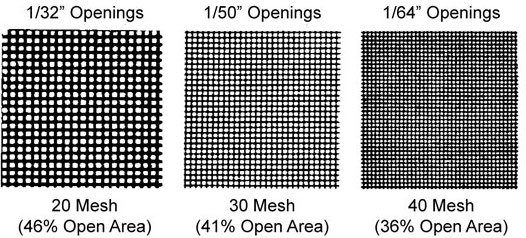
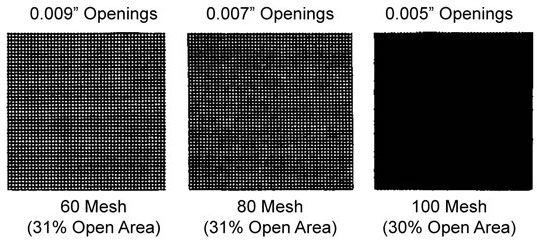
Mesh and perforated plate are available in all materials.
Inline Perforated Plate (these are meant as a relative representation, and may not be sized accurately based on the device you are viewing this with)
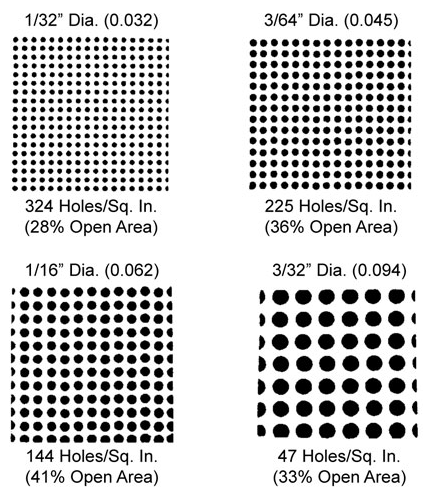
Staggered Perforated Plate
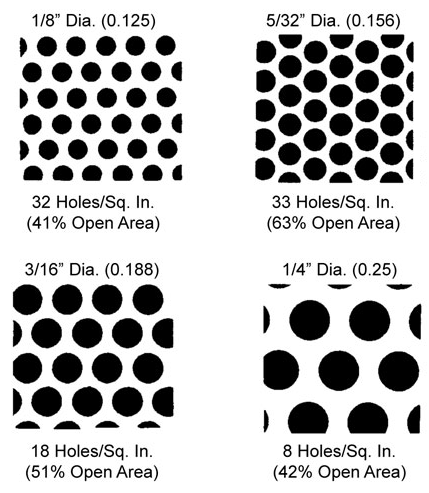
The graphic below illustrate perforated plate and mesh with their respective straining capability.
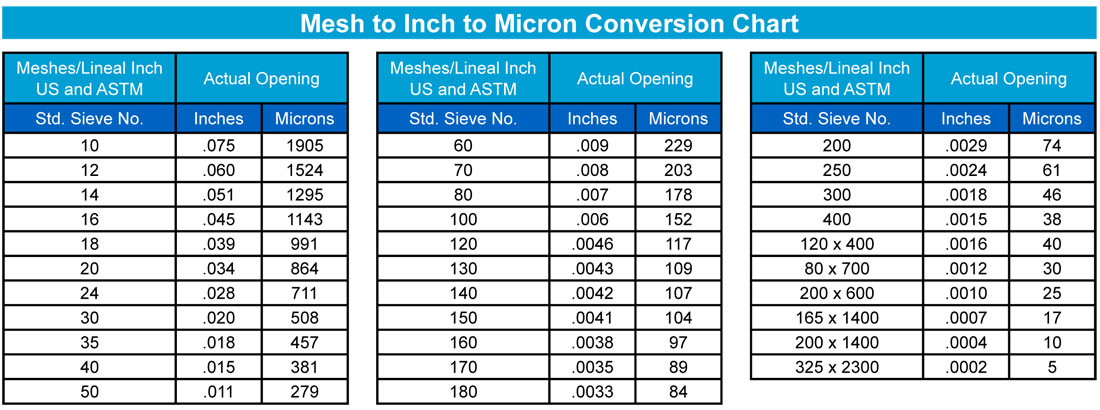
The major factor in choosing hole and mesh size is the quantity and size of the particles that can pass through equipment downstream without causing damage.
You’ll notice that 1/32” to 3/32” perforations feature holes that are inline, or straight across. Generally you see smaller diameter holes in an inline or straight across pattern, and when you have larger holes, you’ll see that holes are staggered.
In the larger 1/8” to ¼” perforations, the holes are staggered.
In the sample perforations the hole has actually been punched in the metal, and ‘hole spacing’ is distance between the centres of any two adjacent holes.
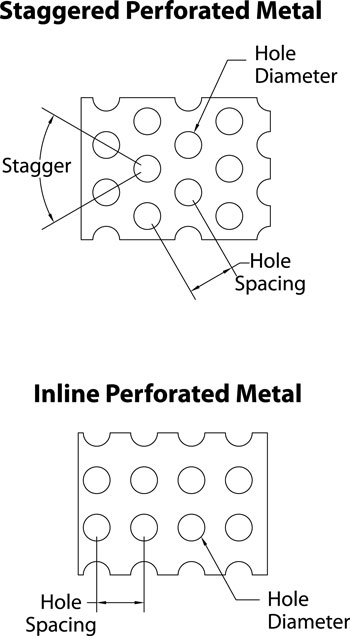
For a specific hole size, when ‘hole spacing’ is great, the open area is lower for the metal which has been perforated.
For another excellent source for more detailed information, visit the Industrial Perforators Association’s website; http://www.iperf.org/
They have more information that illustrates available perforated plate, mesh and wedge wire and their respective straining capability.
As always if you have questions please don’t hesitate to call Sure Flow and discuss your particular application with our engineering department.

